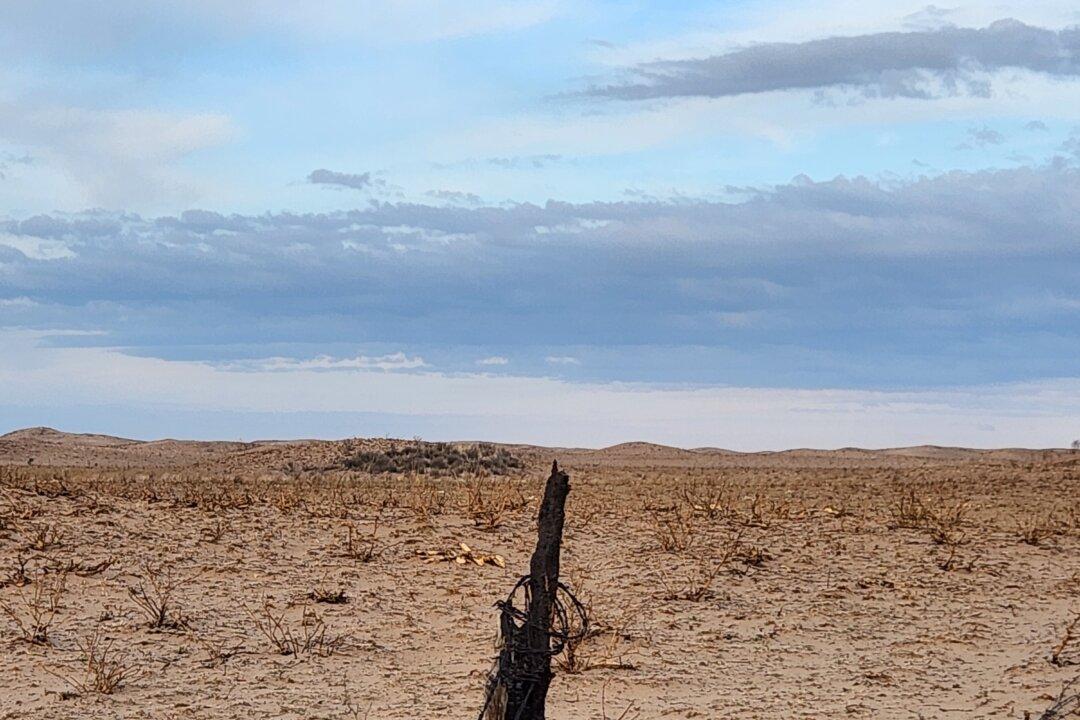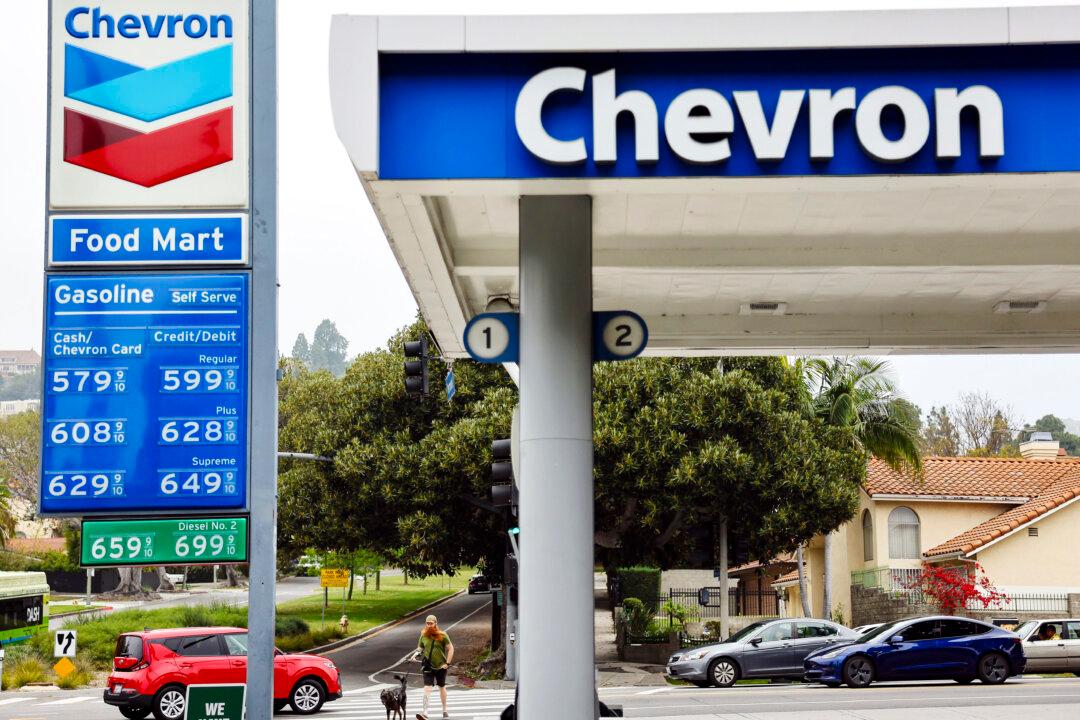The Smokehouse Creek wildfire in the Texas Panhandle burned for weeks, turning ranches into ash, killing thousands of head of cattle, and leaving ranchers and farmers on a long road to recovery.
On Feb. 26, Garret Duvall of Wichita Falls told The Epoch Times he got a call from his grandparents, whose ranch is near Pampa, telling him the wildfire was creeping its way toward their ranch.
“The fire’s getting closer,” Mr. Duvall said his grandparents told him. “So, I packed up and headed up there to help keep the fire off our homestead, which we did not succeed at.”
Thousands of cattle and two people lost their lives in a series of wildfires that scorched more than 1.5 million acres before being finally contained in late March. The blaze also destroyed hundreds of homes and other structures, along with thousands of miles of fencing.
“I knew this was going to be a big one,” he said, adding he could only see about 50 feet ahead when he got there. “I knew it was going to be bad.”
Mr. Duvall said his grandparents were more fortunate than the hundreds of others whose homes, barns, and animals were destroyed. His family lost only one calf, but they were forced to move their cattle to a neighbor’s place because their grazing land was scorched.
“We were pretty blessed and lucky,” Mr. Duvall said, adding that the fire was stopped before it reached their house.
Still, the road to recovery across the Panhandle is expected to take years.
Texas Department of Agriculture Commissioner Sid Miller told The Epoch Times that the blaze burned thousands of miles of fences, which will need to be replaced before cattle can return to the ranchlands.
“This is not the official number, but I’m going to estimate between three to five thousand miles of fence will have to be replaced, and that’s about $15,000 to $20,000 a mile,” he said.
Mr. Miller said he also expects the number of cattle lost to increase from an estimated 7,000 to 10,000 to increase by as much as double in the coming weeks and months.
“We'll probably have to dispose of somewhere between 15 to 20,000 head total,” he said, adding that many will have to be euthanized because their hooves or utters were burned and won’t heal. “In the next six months, there will be a lot of respiratory problems because of the smoke inhalation.”
Stories of Complete Loss
When lifelong rancher Lee Wells of Caddo Mills began seeing news coverage about the wildfires in the Panhandle and hearing the stories of complete loss, he knew he couldn’t just sit back and watch.One of his friends called him and asked if he could help him get a load of hay together to deliver to the area.
Within a couple of days, his friend made his first trip up there and had a chance to meet with some of the ranchers.
“He came back saying, ‘It’s bad, it’s really bad,’” Mr. Wells told The Epoch Times. “He told me a story of a man he took hay to, who, a couple of days before, had a nervous breakdown and lost it because of the total loss.
“He didn’t know how he was going to make it, and it just hit me right in the chest.”
A few years back, Mr. Wells’s nearly 1,000-acre ranch had caught fire, so he said he could relate to the ranchers’ experiences.
“We lost some cattle. All of our fences were torn up from fire crews running back and forth through them and cutting them, and not a blade of grass left,” he told The Epoch Times, recalling the fire at his own ranch. “It was a bad, bad deal. When I started seeing hundreds of ranches burn. I just had to do something.”
Since March 1, Mr. Wells, who also owns a ranch-to-table restaurant in Rockwall, has spent countless hours making phone calls, raising money, and coordinating more than 125 volunteers.
It all started with a Facebook post.
“If you would like to donate money towards hay and feed going toward Amarillo, I am taking donations to cover the cost of feed and hay (I am donating some hay). I am also looking for folks with gooseneck flatbeds to help haul. Message me!” he wrote.
After that post, the messages and donations began pouring in.
Mr. Wells called Chuck Smith, manager of the Northeast Texas Farmers Co-op, and asked him to choose a high-quality feed for cows, goats, and sheep that he could purchase in large quantities and send to the Panhandle.
About 10 minutes later, Mr. Smith called him back with some news that would help stretch the donations further.
“We will sell it to you for cost,” Mr. Smith told Mr. Wells. “We'll bag it and load it and help you any way we can.”
“I just felt like it was the right thing to do to get involved with this,” Mr. Smith told The Epoch Times. I’m a rancher over here in Northeast Texas, and it’s like I told him: We’re one tornado or hail storm away from being devastated ourselves.
“And I can’t imagine what these families are going through,” he continued. “It’s the Christian thing to do. You know, I was brought up that you help people when you’re able.”
‘I Have a Truck’
Natalie Meeks contacted Mr. Wells after seeing his social media post and offered to make deliveries to the ranchers.“I don’t have any special skills. I don’t have any hay, and we don’t have any land,” Ms. Meeks told The Epoch Times, recalling her conversation with Mr. Wells. “I said, but you know, I have a truck, and I can pull the heck out of any trailer.”
Ms. Meeks, who owns a cattle lifestyle company called Cattle Mafia, said she didn’t grow up on a ranch but fell in love with the lifestyle and the people in the industry.
Within a couple of days, she was hauling her first load of hay, cattle medicine, and other items to the Panhandle on a borrowed trailer.
It was dark when she pulled into Wheeler to offload the supplies.
Since that first trip, Ms. Meeks has made several deliveries to the area. She said one of the things that stands out most to her, besides the devasting loss, is the kindness, hospitality, and gratitude she receives each time she makes the trip.
“The main thing they’re worried about when we get there is ‘Are you hungry?’ or ‘Are you tired?’ ‘Do you need a hot meal?’ she explained, choking back tears. ”They’re not worried about themselves. They’re worried about their neighbors.”
Raising Money and Awareness
At the time of publication, Mr. Wells’s efforts had raised more than $98,000. According to his website, he and his group of volunteers sent 205 tons of grains and more than 1,000 bales of hay to the Panhandle.“Every penny [raised] goes straight to feed,” he said.
Mr. Wells said it surprises him that many people don’t understand the “magnitude of this disaster.”
“The initial story was out there, but the follow-up—because it burned for so many weeks—became old news somehow,” he continued. “There are people still losing everything they have.”
But he’s taking his efforts a step further.
Mr. Wells gathered a film crew on his first trip to the Panhandle, where he recorded interviews with ranchers and farmers and shot hours of video depicting the destruction caused by the out-of-control wildfires.
His immediate goal is to keep the story in people’s minds so that they don’t forget about the years-long recovery that has barely begun.
Eventually, he plans to produce a full-length documentary that shares the personal stories of the Texas Panhandle cattle ranchers, which he believes inspire hope, resilience, determination, and love.







